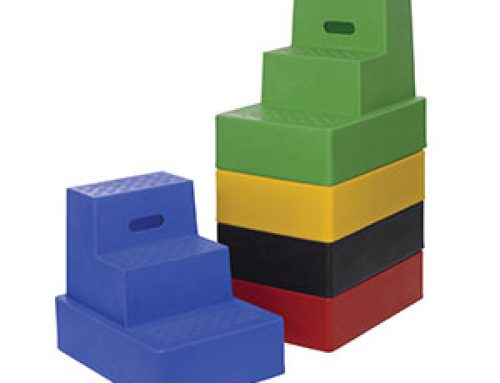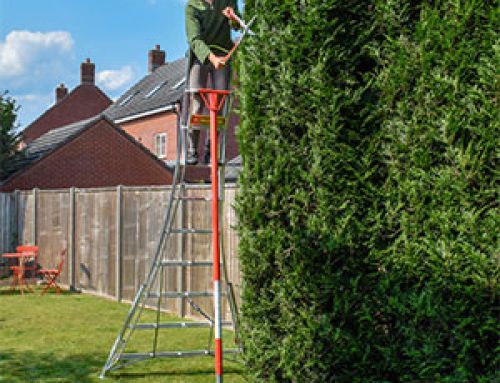Even people who regularly use ladders can get into trouble at height, as one Welsh farmer found out when he fell from his ladder while repairing a barn roof. Owain Roberts had been keen to repair the storm damage, so the barn would be a warm and dry place for his livestock, when the 15 foot ladder he was using slipped out from underneath him, sending him sliding gracefully to the ground, or so he thought. As he reached the end of his descent his left leg got tangled in the rungs of the ladder, twisting and breaking it in twelve places.
As he had been working alone, he fashioned a makeshift crutch from an old broom, but eventually had to call his wife from his mobile phone for help. She initially thought it was a sick joke, but when she saw his leg twisted at a right angle, she knew it was serious and called an ambulance. Roberts was taken to hospital and surgeons battled to save his leg, which required nine screws, two plates and a pin, leaving his leg in a cage to realign the bones as they healed. Stuck in the house, Roberts could not work, and as the accident happened just before lambing season the timing could not have been worse. The family rallied around and managed the lambing between them, and financial help came from the Royal Agricultural Benevolent Institution, who gave the family £3,000 towards expenses incurred from the injury.
Thankfully Roberts has made a full recovery, but there are still some challenges as a result of the pain and loss of function in his leg that will take more time to restore. He has learnt his lesson as well; he'd never climb a ladder alone now, and will always make sure someone is there to help hold the ladder steady. In a few seconds, his life changed dramatically, so he knows all too well how easy it is to have an accident with a ladder.
Ladders should never be used by an unsupervised individual, no matter how much experience or confidence they have. Having someone to foot the ladder increases the stability greatly, and that extra person can get help should an accident happen. A second pair of hands means help with getting items up and down the ladder, and also provides a bit of company on what could be an otherwise boring job.
Getting the angle of ladder right is incredibly important, as a wrong angle often leads to the ladder slipping due to instability. The surface on which the ladder is set up is just as important, as an uneven or slippery surface will cause an accident because the ladder cannot be set up properly on unsuitable terrain.
The ladder itself makes a big difference to safety as well. Using a damaged ladder is a recipe for disaster, and using a ladder that is not the right length for the job paves the way for more corner-cutting, which often ends in tears. A ladder that is too short means reaching too far, which is unsafe, and could lead to building a makeshift platform to add height, another terrible idea. A ladder which is too long cannot be set up safely, as the top of the ladder may be touching the wall, but the area you need to access could actually be too far away from the ladder, again leading to overreaching.
When working with electrics or around overhead pylons it is vital that a fibreglass non-conductive ladder is used to avoid electric shocks, so the material the ladder is made from plays a part in the safety factor. Finally, don't attempt to use ladders in bad weather. Wind can knock you off a ladder, as well as making the task more difficult, and rain causes the ladder rungs and stiles to become slippery, leading to a loss of grip and the inevitable fall. Always be cautions on ladders, and keep your health and safety as the priority.






Leave A Comment
You must be logged in to post a comment.